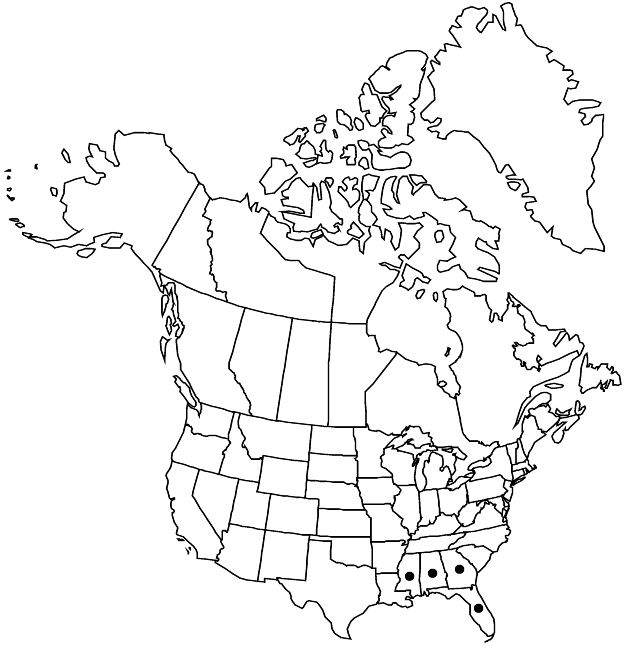Crataegus sargentii
Bot. Gaz. 28: 407. 1899.
Shrubs or trees, 30–50 dm. Stems: twigs: new growth reddish, 1-year old shiny, deep reddish brown, 2-years old grayish red, older gray; thorns on twigs few to numerous, straight to slightly recurved, 2-years old black, slender, 2–5 cm. Leaves: petiole length 25–40% blade, sparsely sessile-glandular; blade ovate-trullate, 4–6(–7) cm, terminal 1/2 ± straight-sided across lobe tips, base rounded to broadly cuneate, lobes 0 or 1–3 per side, barely present or sinuses shallow, LII 0–20%, lobe apex acute, margins serrulate, teeth to 1 mm, veins 5–7 per side, apex acute to acuminate, abaxial veins sparsely hairy young. Inflorescences 4–10(or 11)-flowered; branches glabrous; bracteoles caducous, numerous, often ± curved, green, linear, membranous to subherbaceous, margins glandular. Flowers 15–18 mm diam.; sepals narrowly triangular, 3 mm, base flaring to wide, margins entire or glandular-denticulate, apex ± obtuse, abaxially glabrous; anthers pale pink to pale purple; styles 3 or 4. Pomes yellow or flushed pink, sometimes reddish, suborbicular, 8–10(–12) mm diam.; sepals on collar, reflexed; pyrenes 3 or 4. 2n = 34, 51.
Phenology: Flowering late Mar–mid Apr; fruiting Sep–Nov.
Habitat: Woodland edges, cut-over woodlands, other open woodlands
Elevation: 20–300 m
Distribution

Ala., Fla., Ga., Miss.
Discussion
Crataegus sargentii is mainly from Alabama, extending west to central Mississippi, eastwards with scattered records from Georgia, and south to the panhandle of Florida; it is locally common. Anthesis is three weeks later in the Alabama canyonlands than on the Gulf Coast. The species is most similar to C. gilva; the latter has narrower leaves and smaller pomes. Occasional more deeply incised forms may resemble other species to some extent; they will usually retain the characteristic overall leaf shape of the species.
Selected References
None.